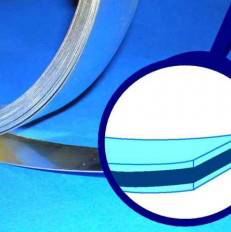| Introduction of flux |
| Release Time:4/1/2014 2:15:37 PM |
The flux is such kind of chemical substance which can remove the oxide on the surface of molten brazing alloy and substrates, protect the surface being oxidizing, improve the wettability of brazing alloy on the substrates and promote interfacial activation. The brazing process can proceed successfully due to the flux. The basic requirements for flux are as followings: 1.The melting temperature and minimum activation temperature should be lower than that of brazing alloy, which can ensure the sufficient fluidity during brazing. Before the brazing alloy melting, the flux should melt and begin to play a role in removing the oxide on the surface of brazing alloy and substrates, creating conditions for spreading of liquid brazing alloy. 2.The flux should have good thermal stability, which could maintain the stability of components and effects during heating. In general, the temperature range of thermal stability for flux should be less than 100℃. 3.The flux should dissolve or destroy the oxide film on the substrates and brazing alloy. In order to avoid loss of flux volatilization, the vaporization temperature of the flux should be higher than the brazing temperature. 4.The flux should have small viscosity and good fluidity, show good wettability to the joined materials and reduce the interfacial tension of liquid brazing alloy. 5.The density of molten flux and resultant products after eliminating oxide film should be lower. They can be easy to float, covering on the surface to protect from the air. The above effect of the flux can promote wettability and spreading of brazing alloy on the substrates, and will not let the slag inclusion reside in the brazing seam. 6.Molten flux residues should not show strong corrosion to the brazing alloy and the brazing seam, and the toxicity of flux volatiles should be lower. |
 |







